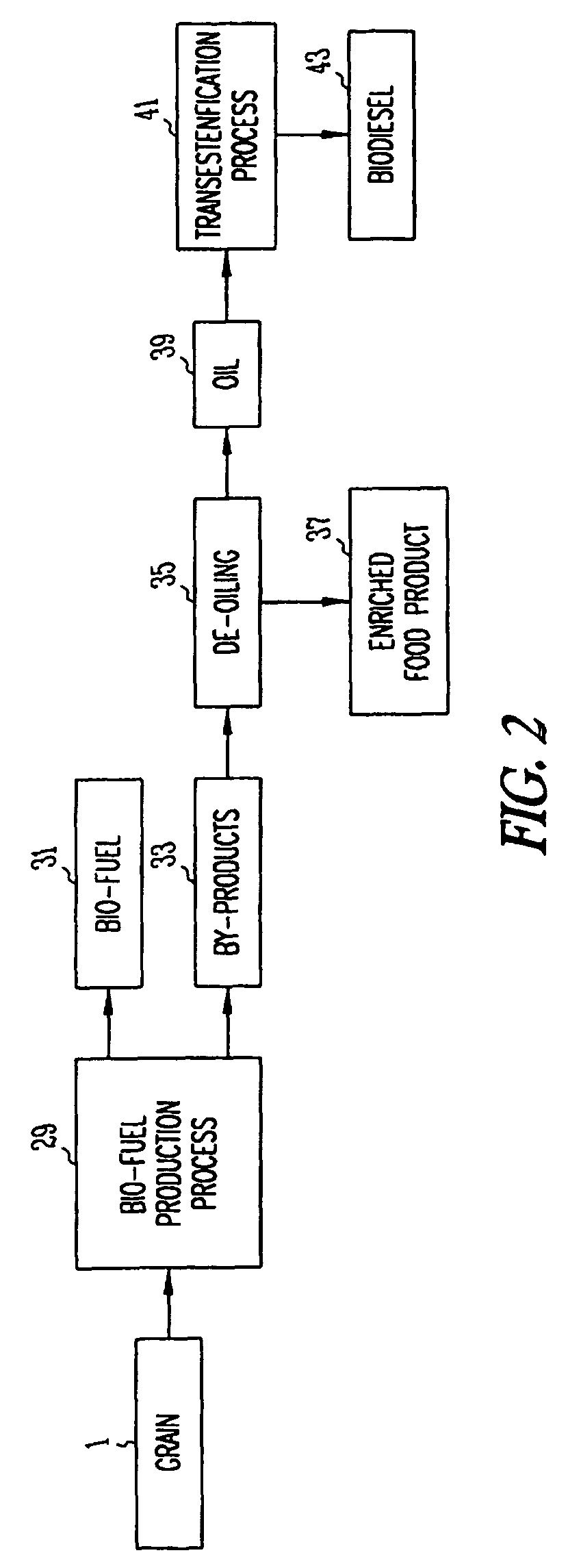Co-production of biodiesel and an enriched food product from distillers grains
a technology of biodiesel and distillers grains, which is applied in the field of co-production of biodiesel and an enriched food product from distillers grains, can solve the problems of not being considered an economically viable by-product, not being able to successfully produce additional value-added products parallel to ethanol manufacturing, and not being able to meet the needs of ethanol production, etc., and achieves the effect of suitable storage and processing
- Summary
- Abstract
- Description
- Claims
- Application Information
AI Technical Summary
Benefits of technology
Problems solved by technology
Method used
Image
Examples
example
[0044]Ten kilograms of dried distillers grains and solubles (DDGS) or 22 kilograms of wet distillers grains were extracted with ethanol in a stainless steel flanged column at 80° C. and a flow rate of 10 liters / hr. The outlet of the column was connected to a 20 L rotary evaporator to concentrate the liquor and recycle ethanol. After about six hours of extracting, the liquor (concentrate) was collected and evaporated to about six liters. It was then left to settle at ambient temperature in a separator. The top layer, about 2000 ml, was separated and then mixed with the same volume of ethanol and 10 ml of sulfuric acid. The mixture was then stirred and refluxed for over eight hours. After settling at ambient temperature in a separator, the bottom layer was separated. The top layer was evaporated on a rotary, giving 1800 ml of ethanol recovery and then distilled in vacuum, giving 1400 g of ethyl esters fraction. The product conforms to D6751-02 Standard Specification for Biodiesel Fuel...
PUM
| Property | Measurement | Unit |
|---|---|---|
| flow rate | aaaaa | aaaaa |
| volume | aaaaa | aaaaa |
| volume | aaaaa | aaaaa |
Abstract
Description
Claims
Application Information
 Login to View More
Login to View More - R&D
- Intellectual Property
- Life Sciences
- Materials
- Tech Scout
- Unparalleled Data Quality
- Higher Quality Content
- 60% Fewer Hallucinations
Browse by: Latest US Patents, China's latest patents, Technical Efficacy Thesaurus, Application Domain, Technology Topic, Popular Technical Reports.
© 2025 PatSnap. All rights reserved.Legal|Privacy policy|Modern Slavery Act Transparency Statement|Sitemap|About US| Contact US: help@patsnap.com



